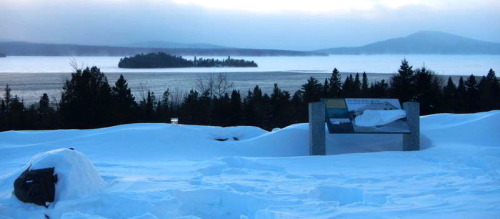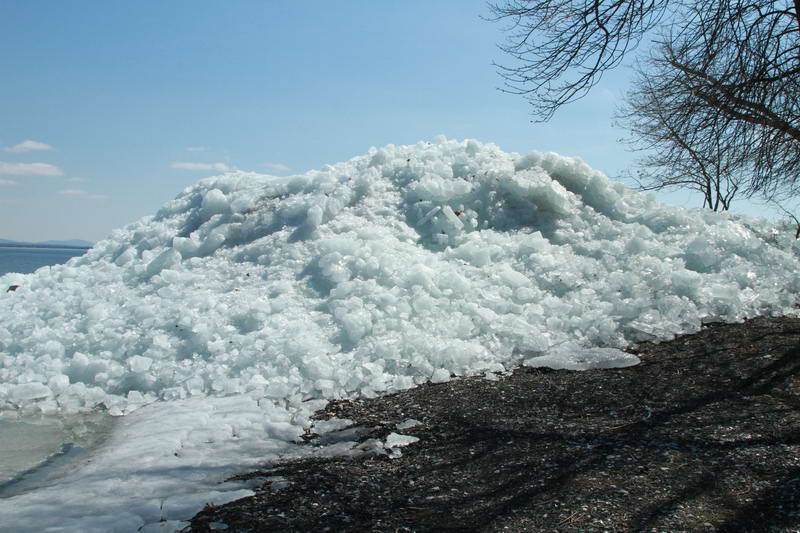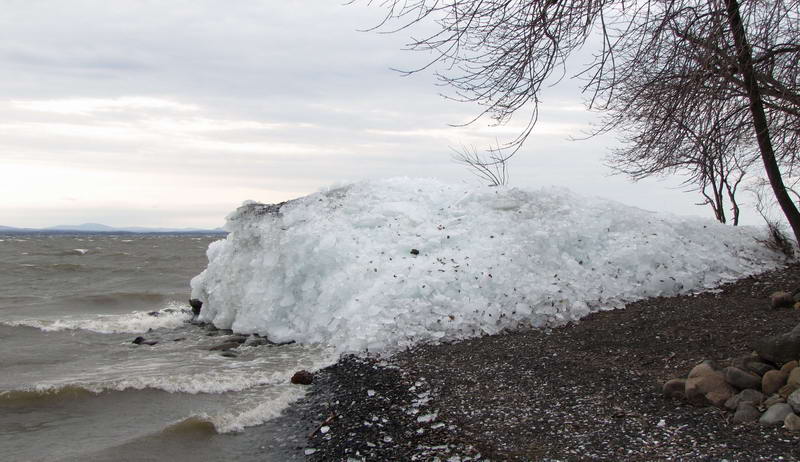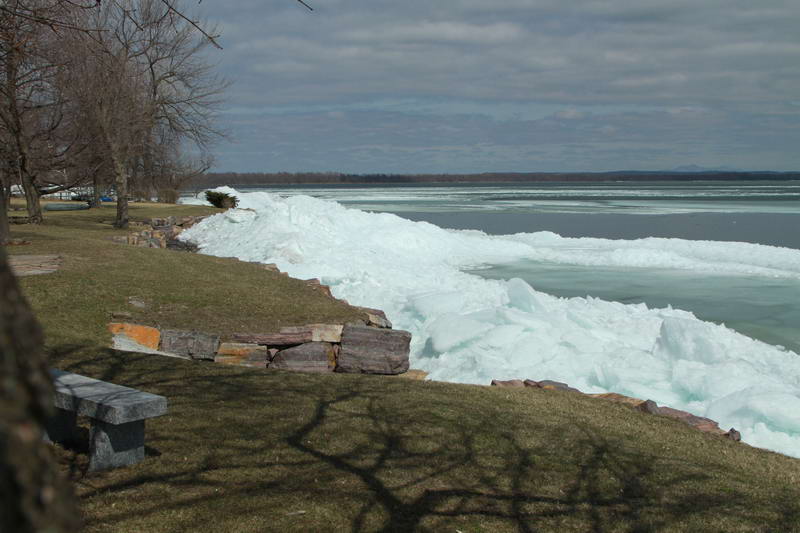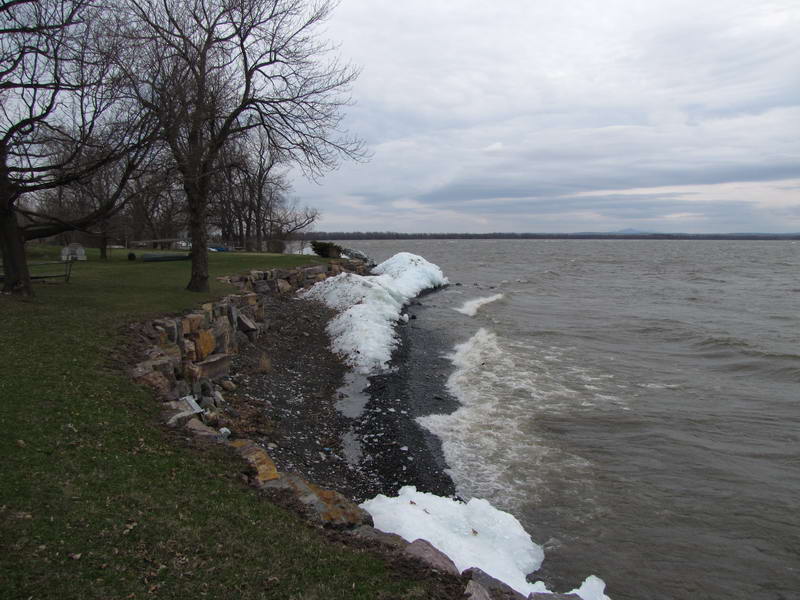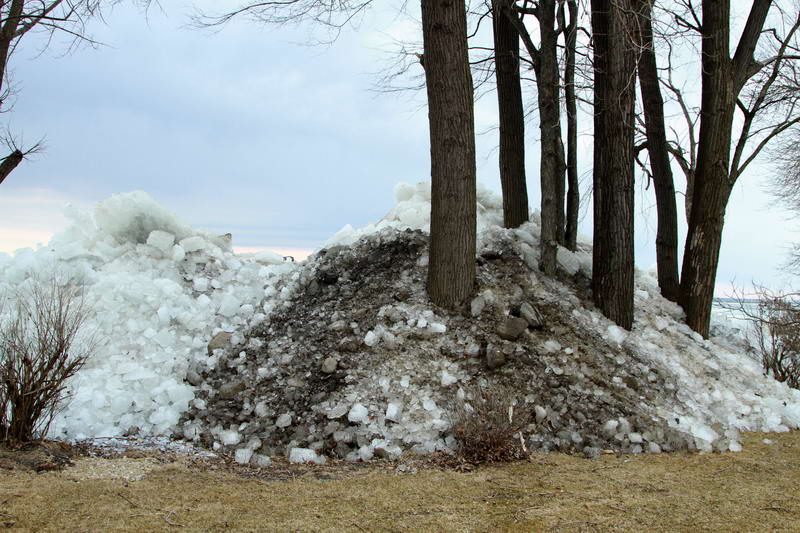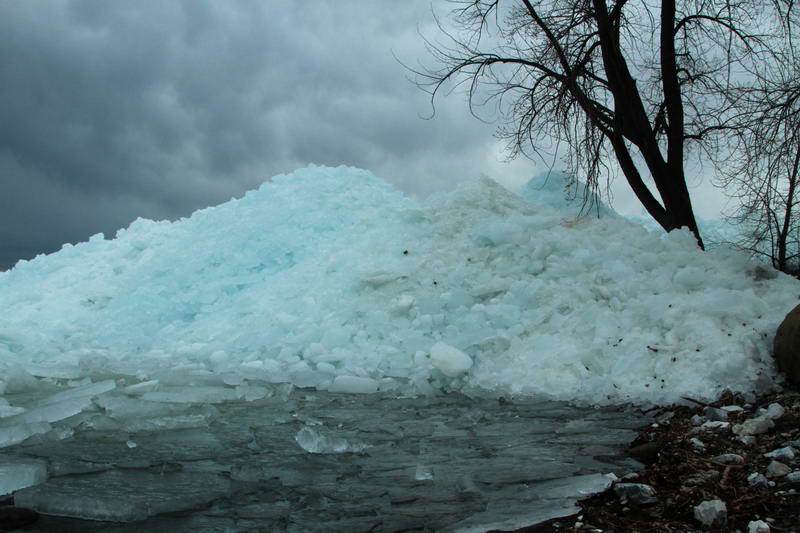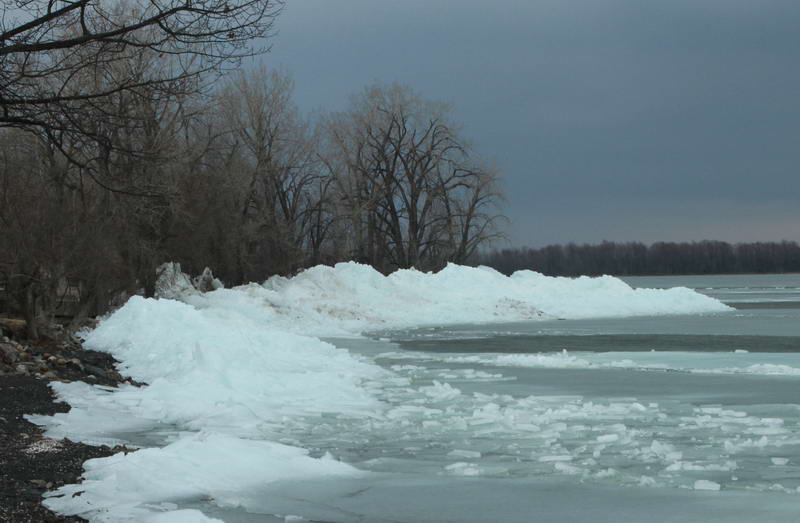Snow Melting in Freezing Conditions
 Wednesday, June 12, 2013 at 02:40PM
Wednesday, June 12, 2013 at 02:40PM By Karel van der Voort
Oegstgeest, Holland. June 2013
Melting and (re)freezing of snow can occur even if the temperature is continuously below zero deg C. For instance, if the top surface of the ice sheet is pushed down by the weight of snow to the extent that water can flow up through cracks, pores and holes in the ice and soak the snow. If refrozen, these water-soaked layers of snow can form a new ice layer or path of smooth ice.
Sometimes it is possible to skate completely around a snow covered lake or sea area along the shore or across a lake when water has flown through a crack or cracks which have formed a skateable path of frozen slush formed in this way.
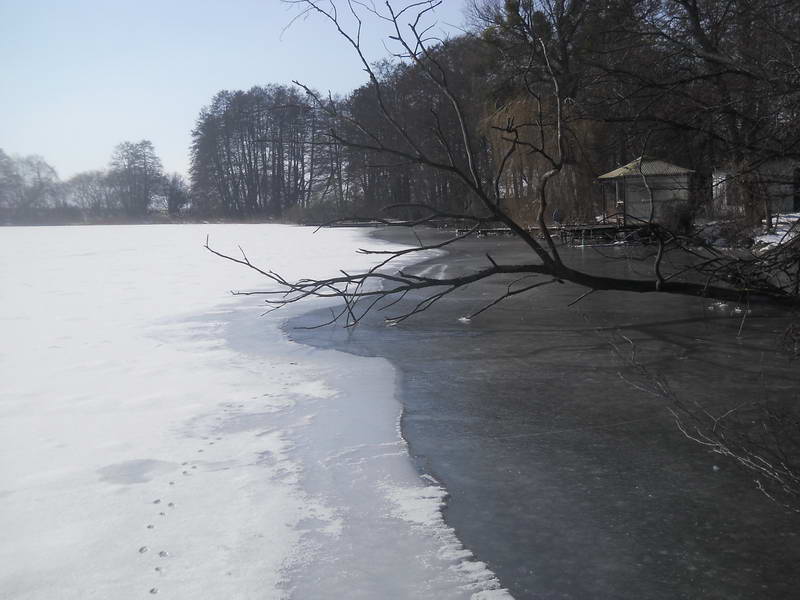
A refrozen shore lead (mote) along the edge of a lake can provide a smooth skating path.
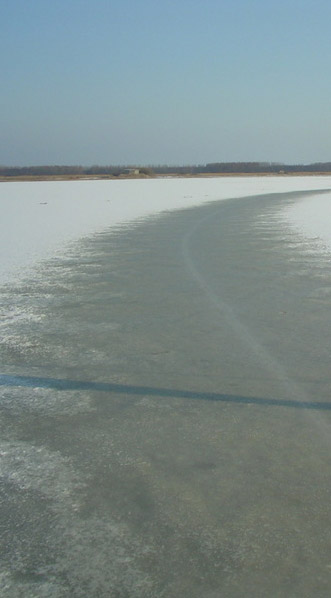 Snow that wicked up water from a wet crack. The slush then froze making a hard, smooth passageway through snow covered ice.
Snow that wicked up water from a wet crack. The slush then froze making a hard, smooth passageway through snow covered ice.
This can provide skateable ice without hindrance from snow even in the absence of a thaw.
As is well known, snow wicks water due to capillary action driven by the hygroscopic surface of the snow crystals , open structure of the snow.
Submerging an ice sheet with snow:
How much snow is needed to push a sheet of ice under allowing water to get to the upper surface of the ice sheet? Perhaps one could have some idea by the fact that the bulk density of solid ice is about 0,9 kg/l, and the bulk density of newly fallen snow is generally about 0,1 kg/l. If so, 10 cm of ice floats 1 cm above the water surface. And it needs 10 cm of snow to press down the ice that much. That ought to be less as the snow becomes compacted overtime.
Also, the less solid or dense the ice (from air pockets from snow structure or caused by internal thawing), the less snow (weight) is needed to push the ice under.
Other ways snow turns to ice:
Practice based on large numbers of observations has shown, that the 'pushing under' of ice is not the only factor that can saturate snow with water at air temperatures below freezing. Other factors include:
- sources/isolators of warmth or shadow areas, like rows of trees or rocks alongside the lake, buildings, bridges etc.
- The snow itself; it insulates the ice reducing the amount of freezing of the slush layer significantly. Perhaps one has noticed these wet, soggy patches of snow on ice when the temperature is low and wondered why these areas are not frozen solid, even at -10 deg C or below,
- The thickness/quality of the ice plays another role - the thinner the ice, the faster the snow on it will melt. Particularly solid or black ice is not a very good insulator for the water under the ice. Spots of thawed snow on a in snowy ice surface are usually an indication of very thin ice. The faster freshly fallen snow melts on ice at air temperatures below zero, the thinner the ice and the less likely that it will be strong enough.
- Open spots in the ice, you will find that the wind causes waves in an open area with water, pushing some of it to come onto the ice. The same thing happens with waves in big lakes or sea areas that are partially frozen.
- Strong currents in rivers and narrow areas
- Long days/high angle sun exposure
- Salt in sea/brackish water areas that can cause the snow to melt on the surface at a few degrees below freezing.
White ice is usually either snow ice (frozen slush) or splash-out ice. Both can be an excellent skating surface when they are cold and smooth. In come cases a thick crust of saturated snow ice over partially saturated snow ice can be skated on as well. Snow ice usually gets soft thaw conditions faster than black ice.
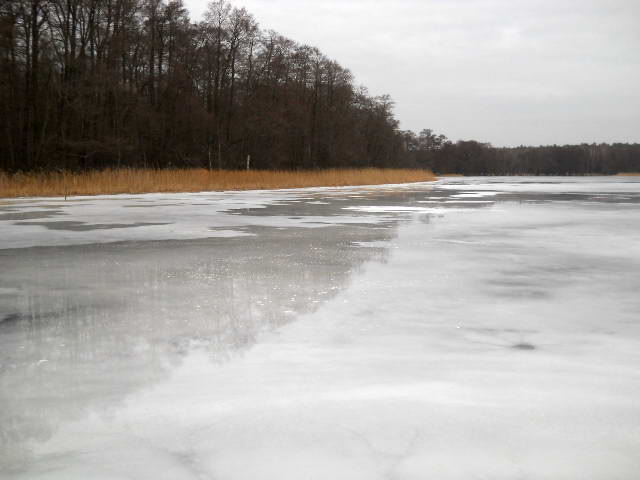
Water on ice
It is a very common misperception that rain is a negative factor for ice, and that it causes significant thawing. On the contrary, a uniform layer of water on ice has, to a certain extent, a preservative effect. A water layer on the ice will be cooled to near freezing by the underlying ice. Additionally water can evaporate and cool the water further if the dew point of the air is below freezing.
Under certain circumstances, such as sufficient wind, low humidity and, in particular, a mostly clear sky, it is possible that at temperatures above freezing so much evaprative cooling and IR radiation from the water occurs that a thin water layer will freeze solid. There have also been numerous cases of melting snow on ice in thawing weather where the ice slush froze more or less solid under a clear sky.
A layer of water keeps the ice surface cool and if it contains snow slush, the open pores get filled, leading to a very smooth ice surface. Generally, ice under a universal or consistent skim of water remains surprisingly hard in thawing conditions, even if a slushy surface is expected and after days of rain.
Also, a consistent layer of water is an indication that the ice hasn't become very porous which is a feature of ice in an advanced thawing condition. That generally means, it has retained most of its strength.

Fog from high humidity in overcast conditions
Thawed Ice:
Thawed and porous ice with a dry surface as any melt-water flows down through the pores in the ice. The depressions are from leaves that absorb the strong sun creating local melting. They typically melt to below the lake water level.
This is at the end of a period of excellent skating ice on the Mirowsee, near Mirow in northeastern Germany. The ice is about 12 cm (4-3/4") thick. It went out a few days later in a windy, warm storm that lasted a couple days.
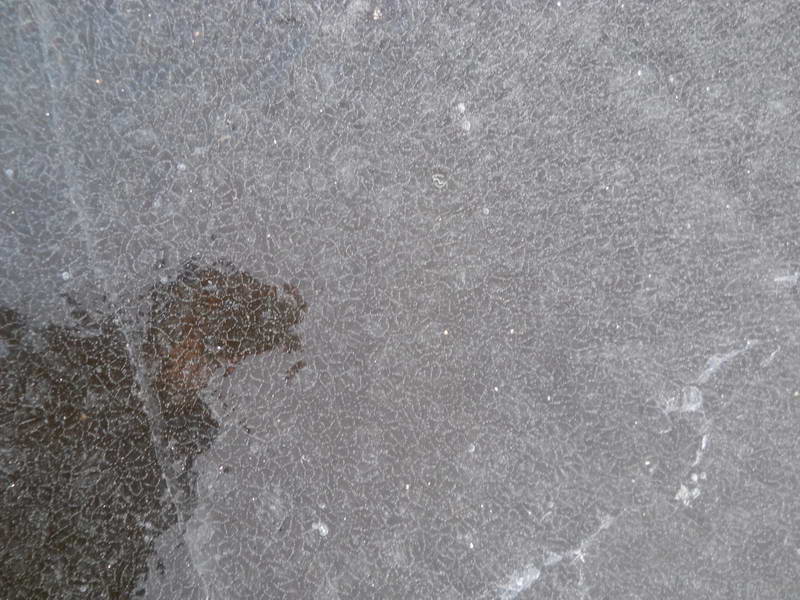 Partially thawed small grain ice. The gain boundaries are visible because of bubbles from dissolved air in the boundary layer ice. The reflection of Karel provides some scale.
Partially thawed small grain ice. The gain boundaries are visible because of bubbles from dissolved air in the boundary layer ice. The reflection of Karel provides some scale.
Partially thawed large grain ice. Melting takes place at the grain boundaries first. The bigger crystals have dimensions of several inches.
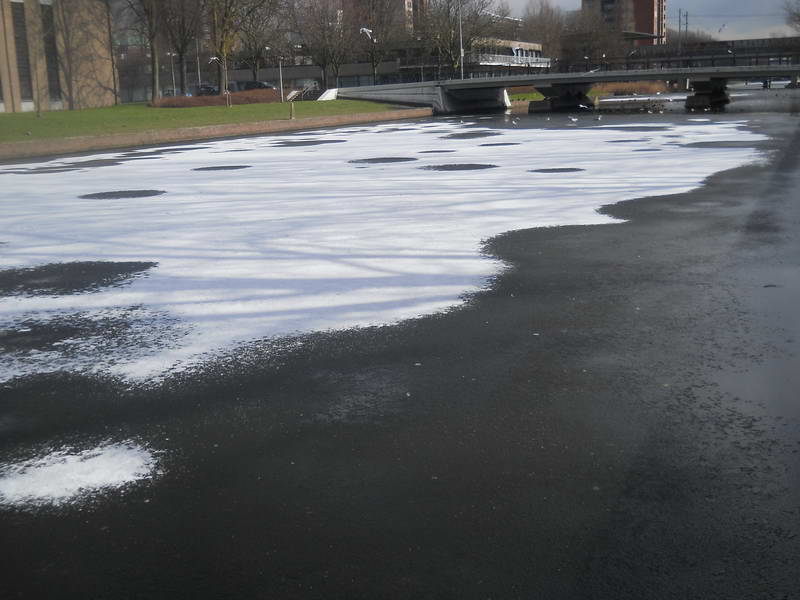 A dusting of snow that fell on porous ice (probably with a thin 'overnight ice' skin where the snow has not melted). Areas where the snow on an ice sheet has melted are, in some circumstances, thinner or weaker.
A dusting of snow that fell on porous ice (probably with a thin 'overnight ice' skin where the snow has not melted). Areas where the snow on an ice sheet has melted are, in some circumstances, thinner or weaker.
About the Author
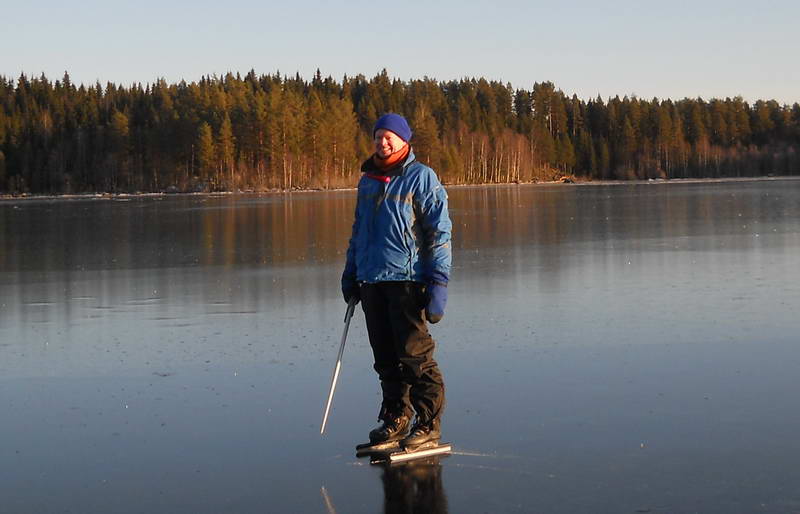
Karel on excellent skating ice near the boarder of Sweden and Norway
He is 47 and has been skating since the age of 10, starting on a canal near his house. He spends the ice season finding good skating ice in Holland and elsewhere around Europe. He, like many of us, is trying to make practical sense out of the complexity of ice.
Bob
 robertdill | Comments Off |
robertdill | Comments Off | 